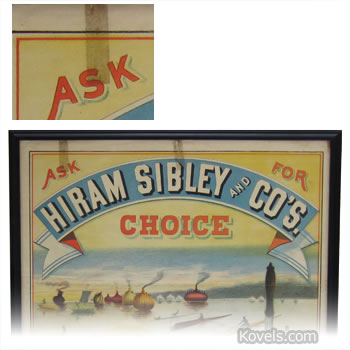How can collectors safely remove sticky labels from plastic, glass, metal and paper antiques and collectibles? What’s the best way to remove a price sticker from the action figure’s cardboard backing? Scotch tape on a poster? Gluey residue on the back of a postcard pasted in a scrapbook? Or old masking tape residue that is not only sticky but hard?
Care should be taken when using Scotch tape, duct tape, adhesive tape or sticky labels. They can leave a residue that discolors over time, can discolor or remove crackled glaze and over-glaze colors (especially gold) on ceramics, take off some of the thin sheet of silver used over copper on old Sheffield plate, or leave a discoloration on metal patina. It’s especially harmful to paper and painted tin. Resulting stains can lower the value of an item. Ten tips to use to safeguard your antiques:
1. Whatever product you try, test it on a small and inconspicuous area first. Be sure it will not leave a spot.
2. Use vegetable oil or orange oil on glass or china. Peel away as much of the label as you can. Soften what’s left with the oil, applied with a Q-Tip, then rub gently. Porous materials like wood, textiles or cardboard shouldn’t be oiled.
3. Use lighter fluid on glass or cardboard. Drip a little on the sticker and around the edges. Blot the excess and be careful not to let it drip anywhere else. Wipe with a soft cloth. You’ll probably have to do this a few times. Don’t use lighter fluid on plastic, especially clear or see-through plastic. It can turn it smoky. Don’t let the lighter fluid touch chrome parts; it can damage the shine.
4. Use a hair dryer to soften the adhesive from a sticky label on metal or ceramics. Then peel off the label. Any remaining glue could be removed with isopropyl alcohol.
5. Use a hot cloth or heat the label with a hairdryer on veneer or painted surfaces. Just don’t pull the label too quickly because you could pull off paint or tear off a piece of veneer.
6. Use peanut butter on plastic. Yes, smooth peanut butter. Rub gently.
7. There are strong adhesive-removal products available at hardware stores. Some are: Goo Gone, Bestine (found at artist supply stores and good for paper), UN-UD Adhesive Remover (on glass, paper, metal and wood) and WD-40 (on glass and metal). Do not apply these products to old, porous ceramics because they can cause darkening or crazing. The product label may not caution against it.
8. Other suggested products to try are acetone-free nail polish remover, denatured alcohol, toothpaste, mayonnaise, mineral oil and spray-on hair detangler.
9. Go slowly. Be gentle and patient. It may take a few tries.
10. Look carefully under any sticker before you buy. It could be hiding a stain or flaw that cannot be repaired.




newsletter
My favorite product for dissolving even the most ancient dried-on tape is WD-40. Works on glass, metal, ceramic, and plastic. Spray it on, let set for a few minutes, and rub off with a paper towel. Sometimes repeated applications are needed. Gently scrape off as much reside as possible between applications. So easy, and doesn’t require much effort — just patience!
I have also used the trick of placing items with stickers in the freezer to loosen them off .